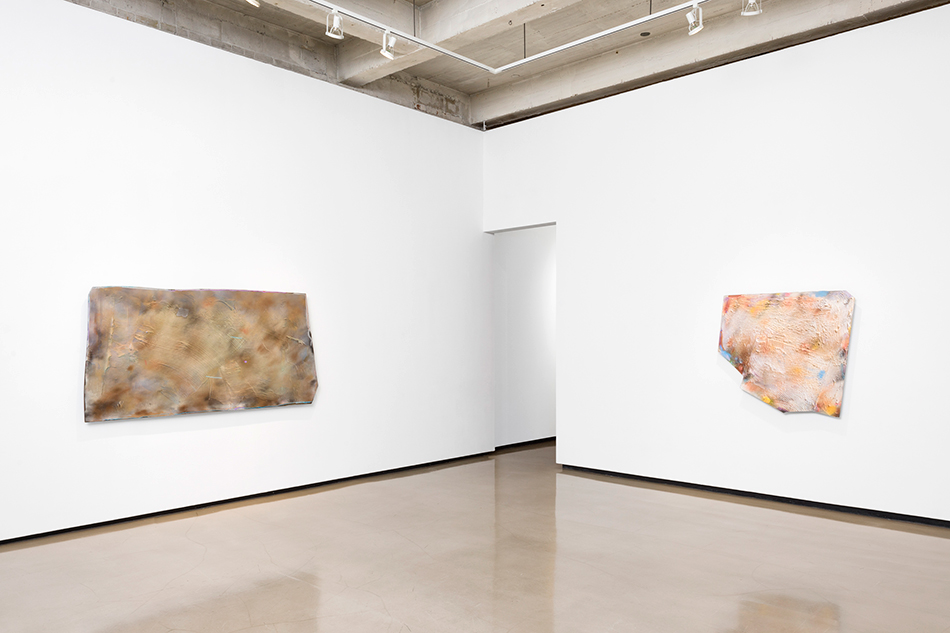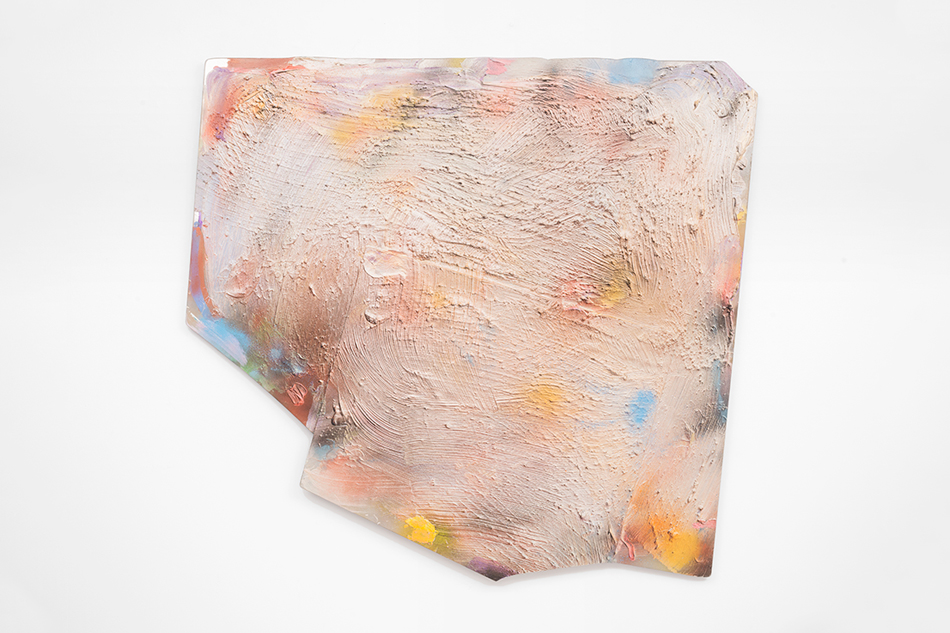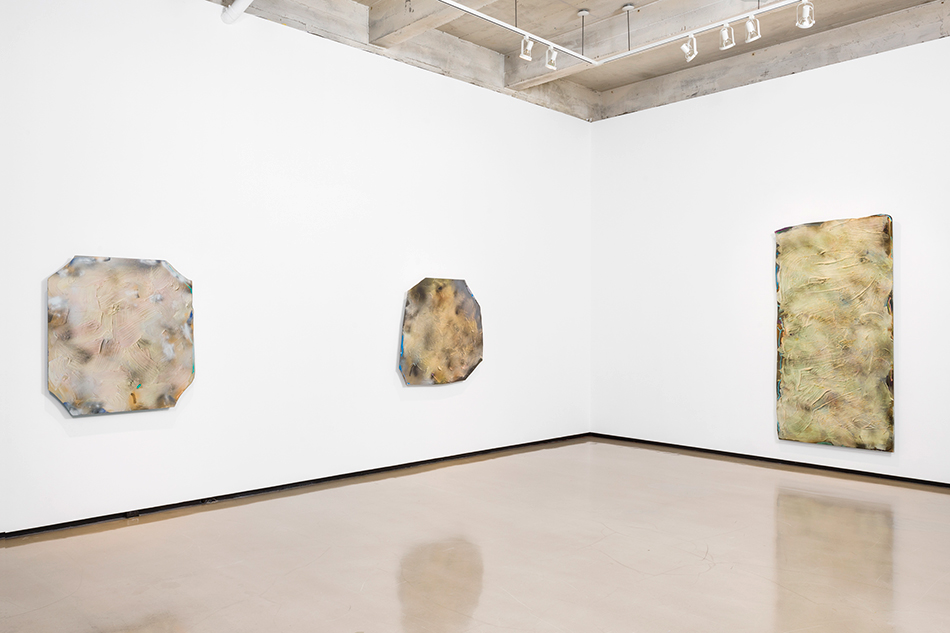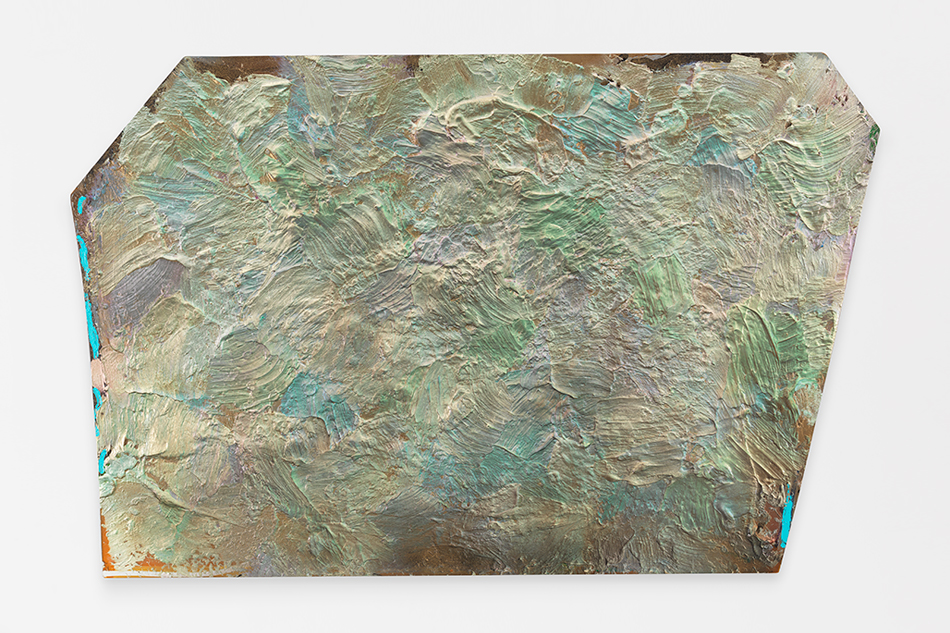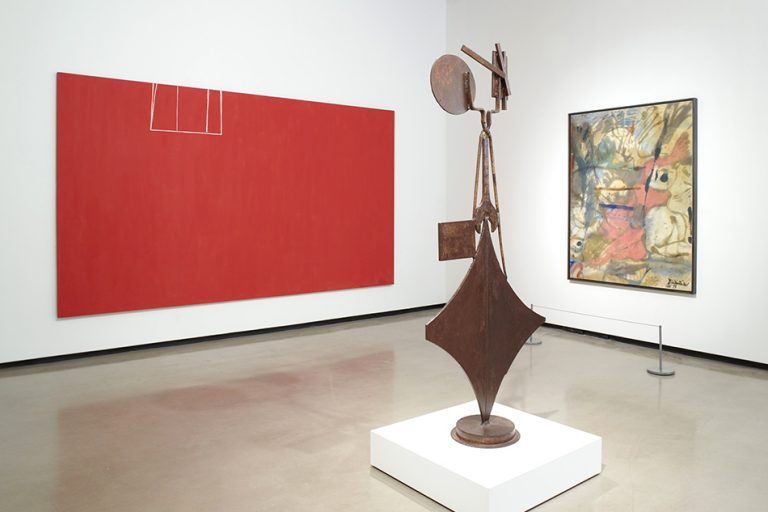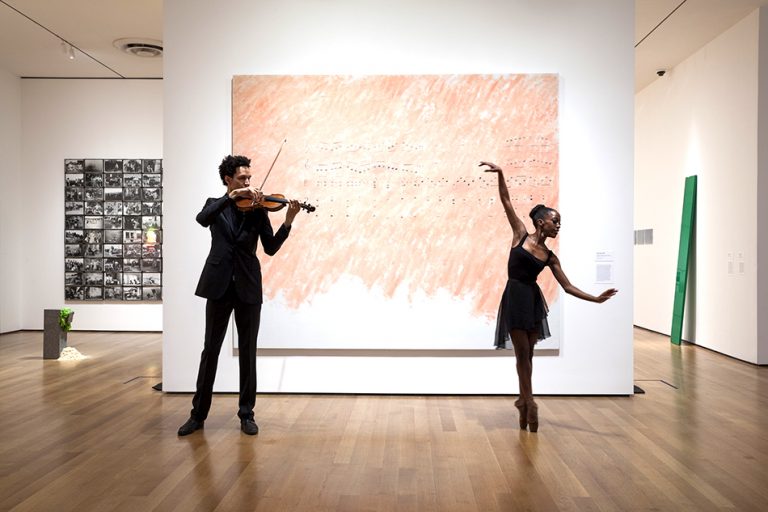
February 15, 2016Above: Jules Olitski holds a painting in his Bear Island, New Hampshire, studio, in a 1975 portrait taken by his daughter Lauren. Top: Og Challenge — Two (detail) is included in a show of the late artist’s experimental Plexiglas paintings, all from 1986, at Paul Kasmin Gallery in New York. All artwork © the artist, all photos courtesy Paul Kasmin Gallery
When Jules Olitski started making a name for himself in the 1950s heyday of Color Field painting, he quickly realized that simply staining unprimed canvas with pigment — the technique employed by fellow Color Field artists like Kenneth Noland, Helen Frankenthaler and Morris Louis — didn’t get him quite what he wanted. The Russian-born, Brooklyn-raised Olitski sought to diffuse the picture plane into a hovering specter of pure color, not just flatten it. So he turned to the only tool that could literally transform paint into a pouf, at least for a moment: the industrial spray gun. He used it to unleash into the air acrylic mist that settled on the canvas in delicate, luminous layers.
Olitski’s long career — he died in 2007 at the age of 84 — took many turns, but what persisted was a drive to coax tactile, visceral effects out of paint. Many of the works he made toward the end of the 20th century were long squirreled away from public view. In 2014, however, the dealer Paul Kasmin began working with the artist’s estate, and Kasmin’s eponymous New York gallery has been pulling back the curtain on Olitski’s lesser-known works ever since. Now through February 27, the gallery is showing 12 paintings on Plexiglas, all made in 1986, while also preparing to devote its entire booth to the artist at the ADAA Art Show during New York’s Armory Arts Week next month.

Kasmin plans to display Og Dazzle in his booth, devoted to Olitski’s work, at next month’s ADAA Art Show in New York.
Olitski’s Plexiglas abstractions are radically different from the juicy, vibrant 1960s fields of color most people know. They seem oddly familiar and wonderfully strange at the same time. Whether calling to mind 1980s glam or modern industrial ruins, frothy opalescent waves or ominous yet touchable toxic sludge, they reveal an artist who was smitten with trying out different materials and tools. “He was always picking up whatever was around to use: brooms, squeegees — painters’ mitts, later on,” says Edith Dicconson, a director at Paul Kasmin. He was also still shooting his trusty spray gun, aiming at the surface from different angles to get various densities of mist.
Many of these works in “Jules Olitski: Plexiglas, 1986” have an opalescent glow, which Olitski achieved through the use of interference paint, a metallic acrylic that alters in appearance depending on how the light hits it. From one angle, a purplish passage has the iridescence of bruised flesh, while from another, it’s more like sunlight peeking through dark clouds as a storm begins to pass. The paintings are always firmly abstract, though, and just to assure that we never misinterpret the picture plane as a window onto illusionistic space, Olitski added squiggles of bright color here and there — a reminder that we’re looking at pigment on a surface. It’s understandable that just a few years later, late in the artist’s career, the relentlessly formalist critic Clement Greenberg called him “the greatest painter alive.”

Night Mover displays the painter’s sweeping brushstrokes.
Olitski used Plexiglas as an experiment, and for an artist fixated on the tactile possibilities of paint, the material proved very fertile ground. He came to it by chance, having discovered a big shard lying among debris in the wake of a massive storm in the Florida Keys, where he lived when not at his home in Bear Island, New Hampshire. “He dragged the Plexiglas back to his studio, and then he began ordering it,” Dicconson says. “He’d pick the shape, and his wife, Kristina, would cut it for him.”
The pieces are imperfectly formed, more objects than paintings, and their sharp edges, graffiti-like residue and metallic colors produce a sense of urban decay. Og Challenge — Two consists of two overlapping panels of Plexiglas covered with swaths of pinkish paint that evoke crumbling stucco. In works like Goddess Alloy, the paint seems to be melting, like frosting on a warm cake, but then a mist of black spray faintly covers it, like ash. The acrylic and oil-based enamel react differently to Plexiglas than they do to canvas, softly expanding on the surface and melding into a continuous layer rather than sinking in.
There is something very satisfyingly ’80s about these works: the Plexiglas, the iridescence, the overall synthetic, industrial sensibility. All the same, it is not surprising to learn that Olitski was deeply moved early in his career by Rembrandt, of all artists, whose portraits he saw at the 1939 World’s Fair in New York, when he was 17 years old. The Dutch master’s visible brushwork, and his method of carefully building up paint to reflect light, clearly left a lasting impression.

